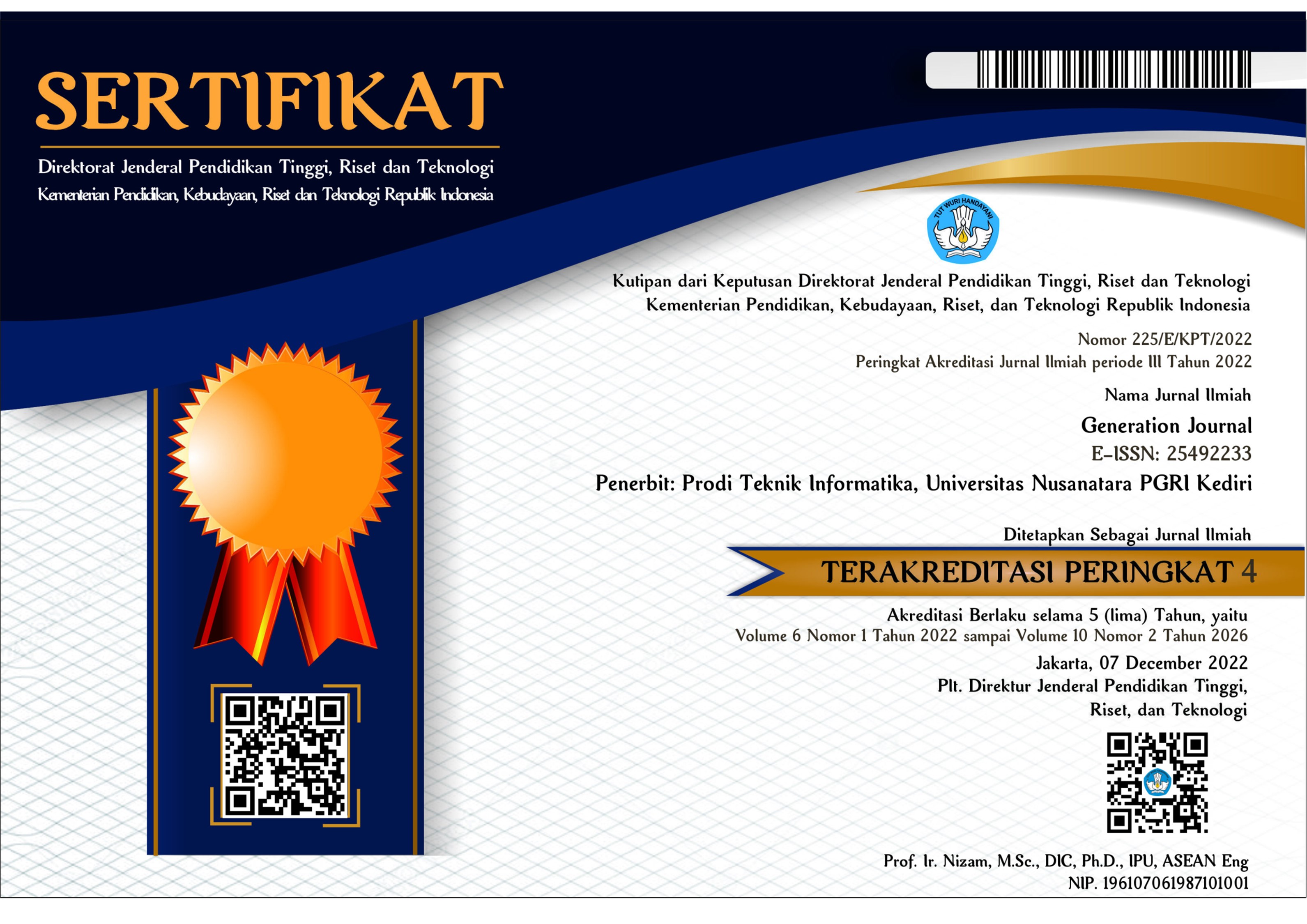Penerapan Augmented Reality pada Pengenalan Hewan Nokturnal
DOI:
https://doi.org/10.29407/gj.v3i2.13092Keywords:
Augmented Reality, Hewan, NokturnalAbstract
Abstrak - Hewan nokturnal menarik untuk dipelajari karena mempunyai kemampuan untuk beradaptasi secara khusus terhadap lingkungannya. Beberapa kemampuan khusus yang dimiliki hewan nokturnal diantaranya : memiliki mata khusus yang dapat melihat dengan baik dalam kondisi gelap, mengeluarkan suara bernada tinggi yang memantul dari objek sebagai panduan ekolokasi. Eksplorasi mengenai hewan nokturnal hanya dapat dilakukan pada malam hari, sehingga tidak semua tingkatan usia manusia dapat dengan mudah melakukannya, terutama anak-anak. Oleh karena itu beberapa informasi mengenai hewan nokturnal masih terbatas.Untuk mengatasi masalah tersebut, dalam penelitian ini dibuat suatu media pembelajaran hewan nokturnal dengan memanfaatkan teknologi Augmented Reality (AR). Teknologi AR dipilih karena mampu membantu menstimulasi berfikir secara konseptual dan merasakan 3D, meningkatkan gambaran (representasi) dan persepsi, menciptakan suasana belajar yang interaktif dan atraktif serta lebih menyenangkan. Dari Hasil penelitian, telah dibangun suatu aplikasi pengenalan hewan nokturnal, dengan menerapkan teknologi AR. Terdapat 6 hewan nokturnal yang dapat diakses dengan menerapkan teknologi AR.
References
[2] Apriyani, M. E., & Gustianto, R. (2015). Augmented Reality sebagai Alat Pengenalan Hewan Purbakala dengan Animasi 3D menggunakan Metode Single Marker , e-ISSN : 2460-0997.
[3] Apriansyah, A., Anugraha, D. M., Prakoso, G., Erdiham, K. N., & Priyana, R. (2017). Aplikasi Pengenalan Hewan dengan Teknologi Marker Less Augmented Reality Berbasis Android. Journal of Computer and Information Technology E-ISSN: 2579-5317.
[4] Binanto, I. (2010). Multimedia Digital : Dasar Teori dan Pengembanganya. Yogyakarta: ANDI.
[5] Brata, K. C., Brata, A. H., & Pramana, Y. A. (2017). Pengembangan Aplikasi Mobile Augmented Reality Untuk Mendukung Pengenalan Koleksi Museum , Jurnal Teknologi Informasi dan Ilmu Komputer (JTIIK).
[6] Ivanova, M., & Ivanov, G. (2011). Enhancement of Learning and Teaching in Computer Graphics Through Marker Augmented Reality Technology. International Journal on New Computer Architectures and Their Applications (IJNCAA) 1(1): 176-184.
[7] Juan, M. C., & Joele, D. (2011). A Comparative Study Of The Sense Of Presence And Anxiety In An Invisible Marker Versus A Marker Augmented Reality System For The Treatment Of Phobia Towards Small Animals. Int. J. Human-Computer Studies 69 440–453
[8] Lai, C.-L., & Wang, C.-L. (2012 ). Mobile Edutainment with Interactive Augmented Reality Using Adaptive Marker Tracking . IEEE 18th International Conference on Parallel and Distributed Systems (ICPADS), 2012, pp. 124–131.
[9] Lee, K. (2012). Augmented Reality in Education and Training , TechTrends.
[10] LETRUD, K. (2012). A Rebuttal Of Ntl InstituteʼS Learning Pyramid. Education Vol. 133 No. 1.
[11] Luther, A. C. (1994). Authoring Interactive Multimedia.Boston : AP .
[12] P, M. (1996). . . Patty McCormick’s Pieces of an American Quilt: Quilts, Patterns, Photos and Behind the Scenes Stories from the Movie,. Newyork: C & T Publishing.
[13] Robin, & Linda. (2001). Menguasai Pembuatan animasi dengan Macromedia Flash. Jakarta: Elek Media Komputindo.
[14] Roots, C. (2006). Nocturnal Animals (Greenwood Guides to the Animal World). Greenwood.
[15] Sutopo. (2002). Multimedia Interaktif dengan Flash. Yogyakarta: Grha Ilmu.
[16] Turban. (2002). Aplikasi Multimedia Interaktif. Yogyakarta: Paradigma.
[17] Vaughan, T. (2011). Multimedia: Making It Work. 8th Edition. New York: McGraw-Hill.
Downloads
Published
Issue
Section
License
Authors who publish with this journal agree to the following terms:
- Copyright on any article is retained by the author(s).
- The author grants the journal, the right of first publication with the work simultaneously licensed under a Creative Commons Attribution License that allows others to share the work with an acknowledgment of the work’s authorship and initial publication in this journal.
- Authors are able to enter into separate, additional contractual arrangements for the non-exclusive distribution of the journal’s published version of the work (e.g., post it to an institutional repository or publish it in a book), with an acknowledgment of its initial publication in this journal.
- Authors are permitted and encouraged to post their work online (e.g., in institutional repositories or on their website) prior to and during the submission process, as it can lead to productive exchanges, as well as earlier and greater citation of published work.
- The article and any associated published material is distributed under the Creative Commons Attribution-ShareAlike 4.0 International License














